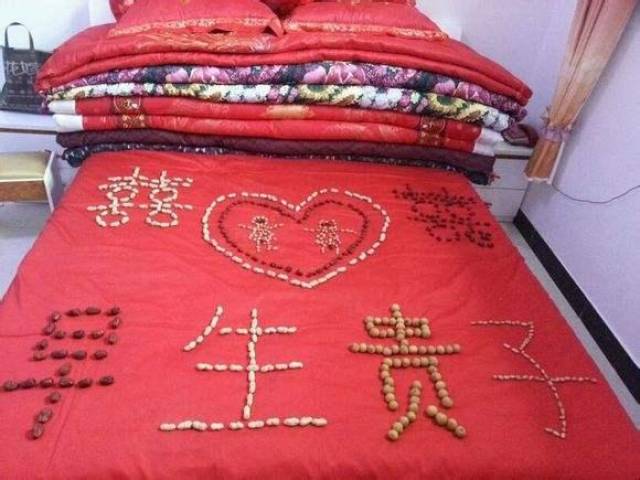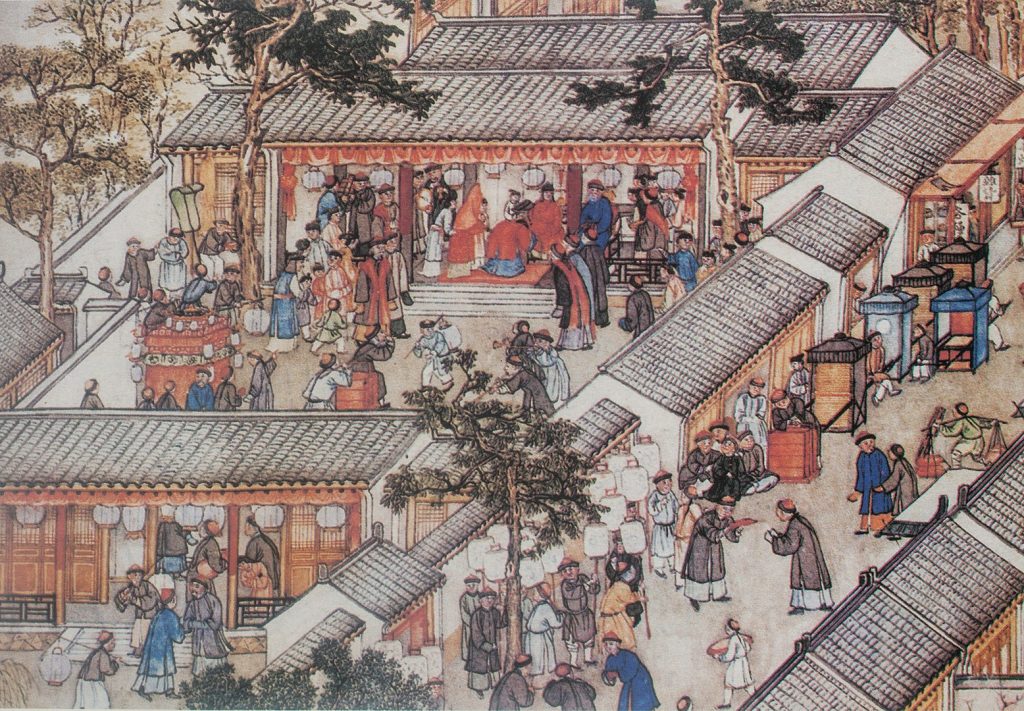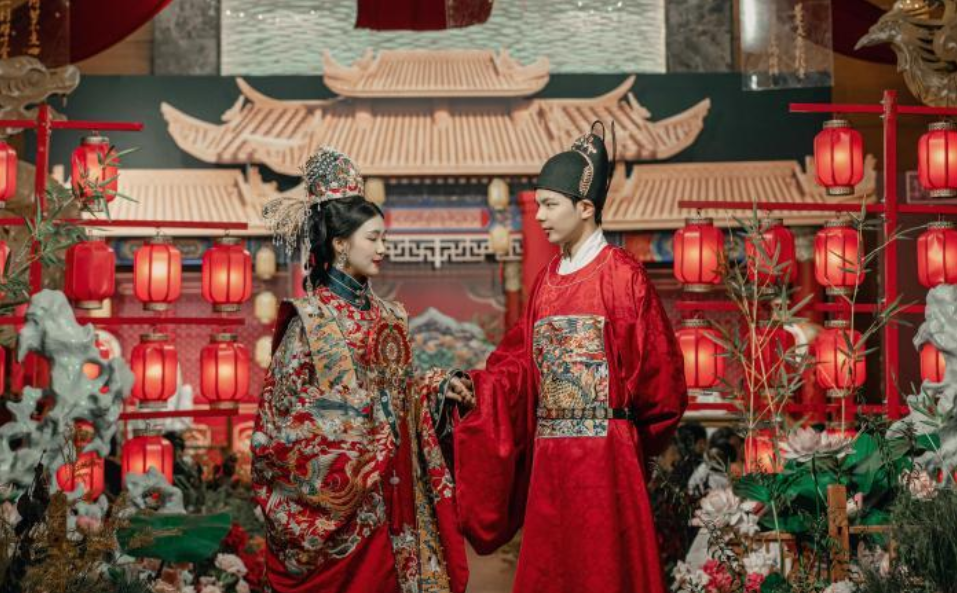3. Wedding Customs
In ancient China’s patriarchal society, where women had low social status, they were in a passive position during marriage, lacking freedom in dating and marriage choice. Ancient marriages involved a series of six rituals known as the Six Etiquettes (六礼). Firstly, there was Nacai (纳采), where the groom’s family sent small gifts through a matchmaker to the bride’s family, typically a goose, symbolizing the proposal. Secondly, Wenming (问名) involved the matchmaker inquiries about the bride’s surname and birthdate for fortune-telling. Thirdly, Naji (纳吉) occurred after receiving auspicious signs from ancestral divination, where the groom’s family would inform the bride’s family of the good news, accompanied by more gifts. Fourthly, Nazheng (纳征) formalized the engagement with a significant betrothal gift. Fifthly, Qingqi (请期) involved selecting an auspicious wedding date and seeking approval from the bride’s family. Lastly, Qinying (亲迎) was the wedding day procession.
Nowadays, according to the Marriage Law of the People’s Republic of China, the legal marriage age is 22 years old for males and 20 years old for females. Legally, Chinese government has prohibited the arranged marriages and allows people to freely choose their spouses to protect individuals’ rights. However, to some extent, the traditional customs in weddings and marriages still play an influential role in China, especially in the conservative and rural area.
Whether in ancient time or the modern China, wedding day rituals typically begin with the bride’s departure in a decorated sedan chair or car, accompanied by firecrackers and music. It’s believed that if the bride’s feet touch the ground, it will bring back luck. Therefore, in the traditional wedding ceremony today, it’s still common to see that the groom carrying the bride out of the decorated car. Upon arrival at the groom’s house, a tea ceremony ensures where the couple first bow to heaven and earth, and then to their ancestors. The couple serves tea and bows to their parents-in-law, who offer blessings and give jewelry and gifts to the bride. In ancient times, the bride would be escorted to the bedroom to wait for the groom, who would host the guests in the wedding banquet. In modern times, both the bride and groom appear together at the banquet to toast their guests. In addition to wearing traditional red wedding attire, the couple also changes into Western-style white wedding dresses and black suits in the ceremonies.

A new couple’s bed decorated by red dates, peanuts, longans and lotus seeds in the shapes of the Chinese characters 早生贵子
The wedding ceremony is adorned entirely with auspicious wedding items. For instance, large red “喜” characters are posted everywhere, the bride is covered with a red veil, and the groom may wear a large red silk on his chest, and so on. The red items not only bring a festive atmosphere to the wedding but also suggest that the couple’s married life will be increasingly prosperous. In the couple’s bedroom, red dates (Chinese jujube) (红枣hong zao), peanuts (花生 hua sheng), longans (桂圆gui yuan), and lotus seeds (莲子lian zi) are placed on the bed, symbolizing “early birth of noble children “(早生贵子, zao sheng gui zi) expressing the hope for many children and blessings for the couple.
After the wedding banquet, in the evening, the couple receive blessings from relatives and friends in their bedroom and engage in playful rituals known as “闹洞房” (nao dongfang). Different regions have various ways and methods of “闹洞房,” with degrees ranging from elegant to crude. Sometimes, if it goes too far, it can bring embarrassment and discomfort to the couple. However, because it adds a lively atmosphere to the wedding, this tradition is often included in subsequent weddings.
On the third day after the wedding, accompanied by her husband, the bride returns to her parents’ home with gifts to report her safety and acceptance into the groom’s family, and then she returns with her husband to his family. In ancient times, due to transportation limitations, if the groom’ home was far from the bride’s parents’ home, once she moved to her husband’s home, she might not have the opportunity to return to her parents’ home again. Therefore, returning to the bride’s family (回门) may be the last chance for a woman to set foot in her parents’ home. This tradition is still observed in modern weddings.
In recent years, some young people in China have begun to pursue a new, simpler form of marriage known as “naked marriage” (裸婚), where couples get married without the traditional symbols such as a house, car, wedding ceremony, or wedding rings, and sometimes even without a dowry or betrothal gifts. This form of marriage typically reflects the realistic choices of the younger generation facing high housing prices and economic pressures, while also expressing their pursuit of love above all, a simple lifestyle, and freedom from material constraints.
Watch this video which introduces the traditional Chinese wedding customs (three letters and six etiquettes)
Another one worth of watching is the eight things that happen in every Chinese wedding.
In modern China, more and more young people are choosing to incorporate authentic traditions and rituals into their own wedding ceremonies. This video showcases the traditional wedding customs of the Han Dynasty, providing a glimpse into the historical practices that are being revived and celebrated today.
Watch this video which shows a foreigner attends a Chinese wedding.



